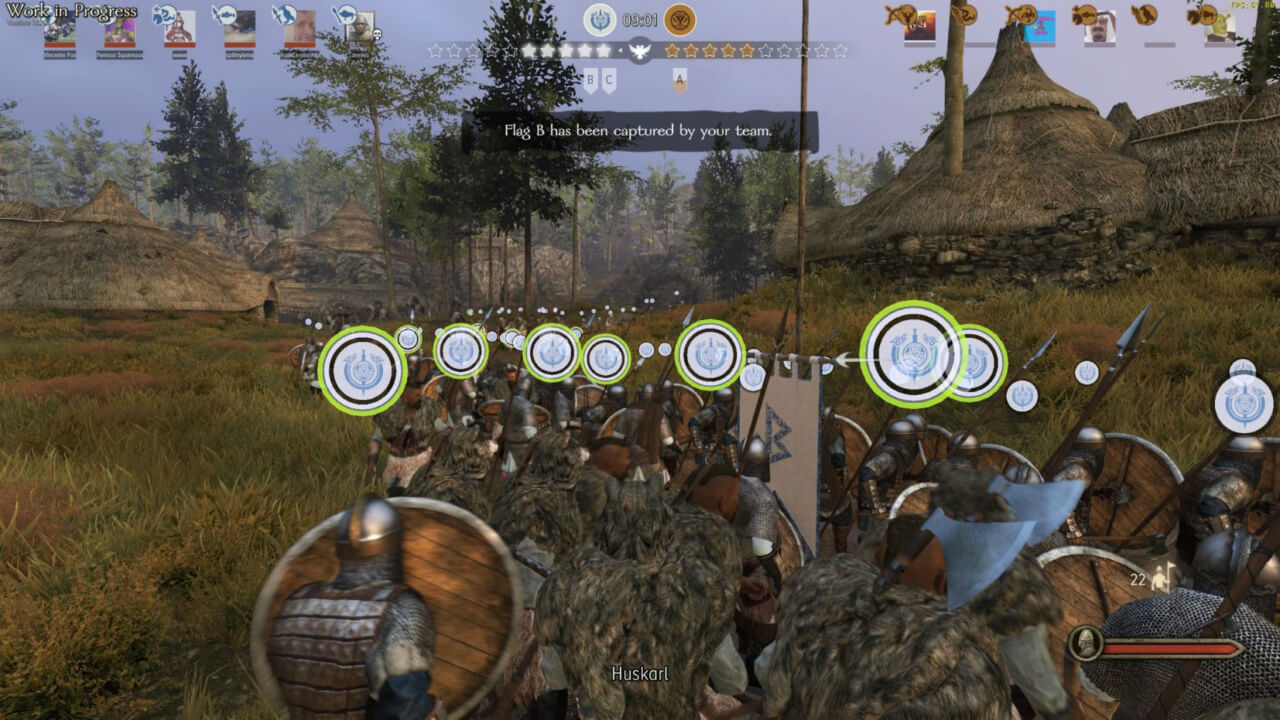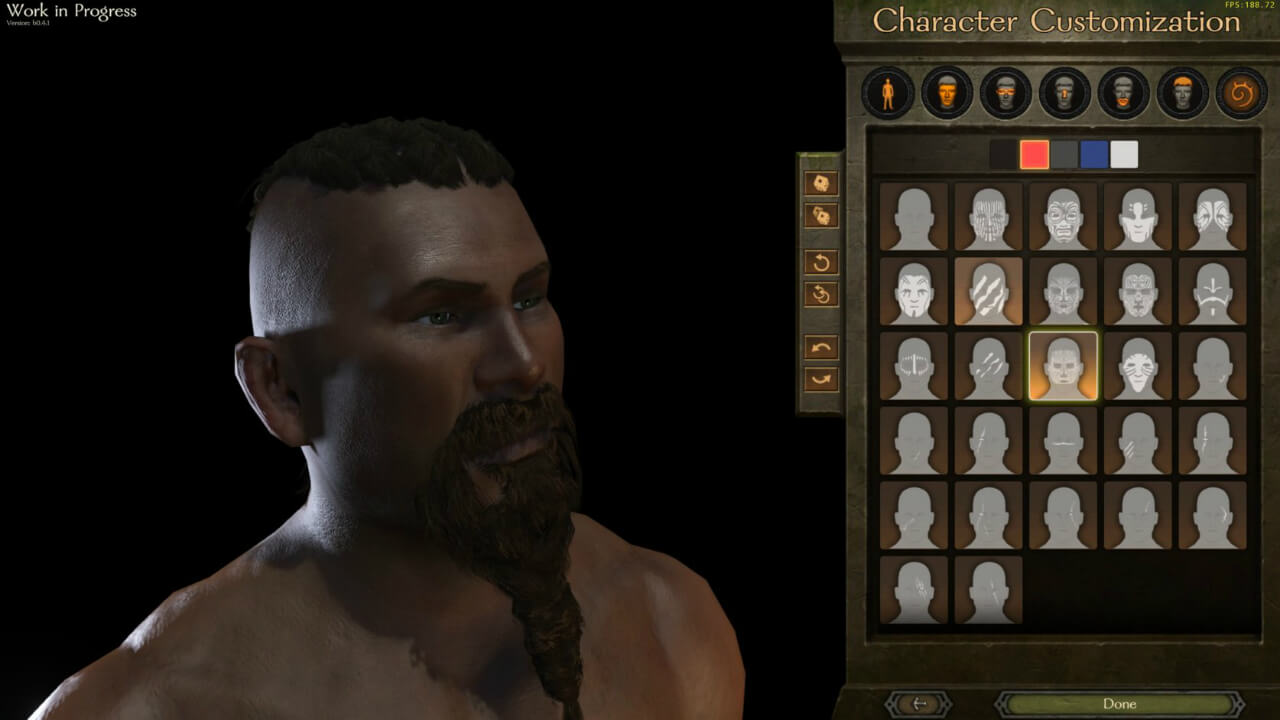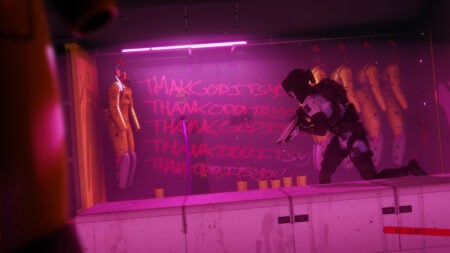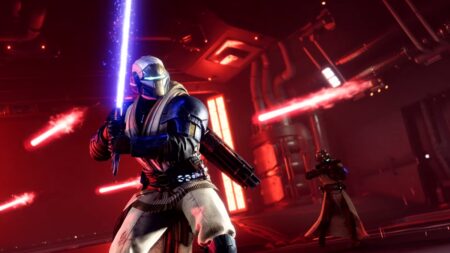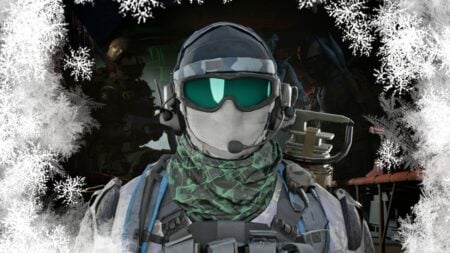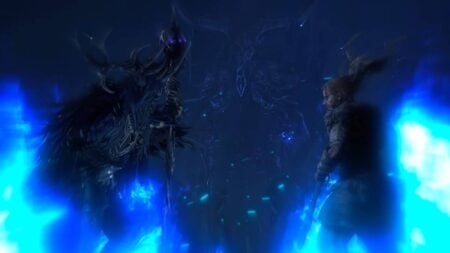Skip To...
[Updated on August 1, 2024, to improve readability and the article’s formatting.]
The original Mount & Blade and its myriad expansions, developed by Turkish indie developer TaleWorlds, was a rough but delightfully engaging war simulator and combat action RPG. Its much-anticipated sequel, Mount and Blade II: Bannerlord, has been ostensibly in the works since 2012 with a murky, ever-shifting release date, but 2019 finally brought us playable builds, and TaleWorlds promised an early access release in March 2020. The game had its 1.0 release on October 25, 2022.
The developer is doing rolling invites to the closed beta, and I got in. The non-disclosure agreement for beta participants was recently lifted, so I’m free to give you all the skinny on how Bannerlord is looking in its current build, 0.4.1.
The World and Weapons of Bannerlord
Bannerlord features six factions, each of which has seven playable classes with their own stats and weapons. Each of those seven classes can choose three different versions, which alter their play a small amount. For example, a cavalry class might choose between a faster horse, more armor, or a heavier lance. An archer might choose between more arrows, a stronger bow, or an additional weapon option. The main difference between the factions, beyond small cosmetic differences, is the different breakout of classes.
One of the weaknesses in the current build is that the balance between the factions seems inadequate. Shields are incredibly strong, with most weapons having little way to counter or get around them. They can blunt arrows except to the feet or very tip of the head in perpetuity, render spears almost useless, and do work against swords. Axes are the only weapons that break down shields effectively, but even they take a long time to wear them down. As such, among foot soldiers, ones with shields tend to outclass ones without.
While they aren’t as good against other troops as swords, spears are steller against cavalry, especially when paired with a shield. Those damned horsies love to ride through an ongoing fight, trampling and spearing you while you’re doing other things. A team of spear-and-sword-users will clog up their lines and de-horse them in short order. Fortunately, there are plenty of ground troop options that have shields, spears, and other melee weapons to switch to, so they’re usually the way to go. Some melee troops can opt into a thrown weapon, such as javelins, which are a nice bonus, but the ammo counts for these are low enough that they aren’t game-breakers. The final major consideration is armor; 50 armor will do a lot more than 2 to keep your forces in the fight.
While these distinctions render certain ground troops far better than others, pretty good ones are available to all factions. That isn’t true of cavalry or archers. Some of the same things vis-à-vis weapon types and armor hold true for those classes, but there are additional concerns. Good cavalry classes have shields, bows, and more weapon types available. Weak cavalry factions are limited to just a couple of options with a basic spear and sword, and a charge does less damage. Another consideration is whether a couchable lance is available. Anyone who played Mount and Blade knows that couching a lance—lowering it at speed so you can impale those paeons on the ground without having to time an attack—is a powerful tool to have at your disposal.
For archers, some bows are better than others by virtue of damage done, fire speed, or ammo available, but the most significant consideration is which factions use bows vs. crossbows. Crossbows suck. They can shoot farther and straighter than bows and do good damage, but they’re continually slow to reload; reloading requires that you stand still, and any flinch will restart the whole process. Hopefully, crossbows and arbalests get a significant buff before the game’s release because, as is, they’re almost useless. You need so much coverage from your team to do any good that if you had it, you would have won without them. Bows, on the other hand, are extremely useful, so not having them available is a big blow to a faction’s value.
Bannerlord Faction Comparison
While the imbalance is clear, the different factions are hard to evaluate for several reasons. First of all, I’m bad. I let go of an arrow, and it goes behind me, but other players hit me consistently. As such, I would like to lodge a formal complaint to TaleWorlds with the following request: “Please buff me, personally, and make it so horses don’t run away from me when I accidentally attack them.”
Second, team composition makes a big difference, and the skill profile in the beta, which has a small player pool and no skill-based matchmaking, varies wildly. Bannerlord is a game where both your mechanical skill and your knowledge matter a great deal, and some people have no idea what to do. Others have put their thousand hours into Mount & Blade and know how to count frames, turn character models, and do everything else they need to do to get an edge.
That said, trends emerge, primarily based on what classes are available to the different factions. After around five hours of play, my early inclination is as follows:
Khuzait > Aserai > Sturgia > Empire > Vlandia
I left Battania out because the game never gave me that faction to try–there’s no way to choose your faction in the beta, unfortunately. Based on playing against them and looking at their classes and stats, my feeling is they land somewhere in the middle, perhaps between Sturgia and Empire.
The Middle Eastern factions tend to have more and stronger options for ranged and cavalry classes than the European ones, which I think gives them an edge, at least for the currently available game modes. They still have what you need from foot soldiers, so merely having fewer options doesn’t really hurt them. Sturgia has a great, bulky footsoldier in Huskarl that deserves mention, with proper weapons and a ton of armor, and Vlandia just really got boned. Its peasant class seems better than most, but that’s a race that’s barely worth winning, and Sergeant is a reliable option, but that’s about all it has going for it. Crossbow-only for ranged classes, underwhelming cavalry, and Vougier is a melee option with no shield and nothing that makes it stand out. Also, one of Aseria’s classes can ride a camel.
Game Modes
The playable beta is for two modes of action combat: Captain and Skirmish. Captain, the more popular of the two, sees two faction teams of up to six battle over three control points. Each player chooses a class from their faction and gets a set number of those troops based on which class it is. Perhaps you get 25 peasants but seven cavalries. You play as one of the soldiers and fight for yourself in the first or third person, but you can also issue orders to the rest of your cohort who will be fighting alongside you. If you’re brought down, you can take over one of the other members of your squad until none are left. One team wins when they exhaust the other team’s soldiers or morale (which is gained by holding the control points). It’s a fun game mode that rewards teamwork and strategy.
Archers can do a lot of damage. The AI has a good aim in its effective range, so if troops without shields are left in the open, they’ll get pincushioned. However, stats make a big difference, and archers are fragile. If you leave them exposed without other soldiers to protect them and shielded troops or cavalry approach, they’ll go down fast. If you leave your squad to do whatever they want, they’ll do okay, but they are far more effective with orders. Tell your archers to hold their fire until the enemy is in range so they don’t waste all their ammo when they can barely see their quarry. Tell your shield-carrying troops to form a shield wall or a 300-style phalanx to cover each other, and you’ll make it much harder for the enemy to break through your ranks.
There’s a reason Captain is the preferred game mode. Skirmish is funky and unfun. In Skirmish, two teams of up to six players face off with similar goals (however, because it is so unpopular in the beta, I was never able to get more than a three-on-three game despite very long wait times). Instead of squads, each player controls only their character. They can, however, respawn by spending gold, though stronger classes cost more.
It’s an excellent idea, but the maps are too big, and three control points are too many for a three-on-three battle. It turns into a slow, tedious fight that you want to end. I tried two games to make sure I knew what it was, and I have no interest in playing it anymore.
Classic M&B Mechanics
Mount & Blade was praised for its deep combat mechanics. They haven’t changed a ton for Bannerlord. That’s good and bad. The depth is excellent. The physics are great. It doesn’t feel like a set of “moves” you can do; it feels like you’re running around and acting and causing things to happen. When you run your horse into someone, they are likely to fall over. It can create some very satisfying moments. However, it also feels a little clunky sometimes, is challenging to master, and hit detection is bedeviling. I will swear I run a lance through someone’s head with no effect, then hit what, as far as I can tell, is the same spot and be rewarded with damage.
It’s possible experts know what to expect and exactly where and when to aim and swing, but it sometimes feels like a spammy crapshoot to me, which offsets the depth the system sports. On top of that, there are some issues with certain weapons. I already mentioned crossbows. In addition to being perhaps too strong, shields are sometimes not fun to play. A shield-and-sword fight involves a lot of back-and-forth swing-and-clunk. Nobody wants to do that for 45 seconds.
It’s important to remember that this is an early beta for Bannerlord, so there is plenty of time to tweak things and get the balance right. Of course, a lot of it feels like it did in Mount & Blade a decade ago, so I’m not sure whether that’s on the agenda.
Looking forward
Unfortunately, the beta only covers the two multiplayer combat modes. The most engaging part of Mount & Blade was always choosing your allegiance, going from town to town, building up your forces, or becoming a vassal. There were sieges, taxes, and character customization. It was like Chivalry, Total War, and The Elder Scrolls had a rough-and-tumble, plotless baby.
That said, even as someone who often skipped the combat portion of Mount & Blade, I found myself enjoying Bannerlord’s demo. It was similar to but better than its predecessor—still a little rough but a lot more polished. The graphics are nothing to write home about, but they’re everything you need them to be. This type of game doesn’t need triple-A graphics.
Given the beta’s constraints, I was in some very lopsided games, but I was also part of some closely contested matches where teammates were rooting for me as my last couple of troops battled it out with a few remaining enemies. I have to say, when it worked, it worked well. The closed beta didn’t really show me anything new, but after a long hiatus, it reminded me what Mount & Blade is, and I’m more excited for Bannerlord now than I was before. I guess that’s a win. If you’re interested in these genres, I’d recommend keeping an eye on it when it hits early access next year.

